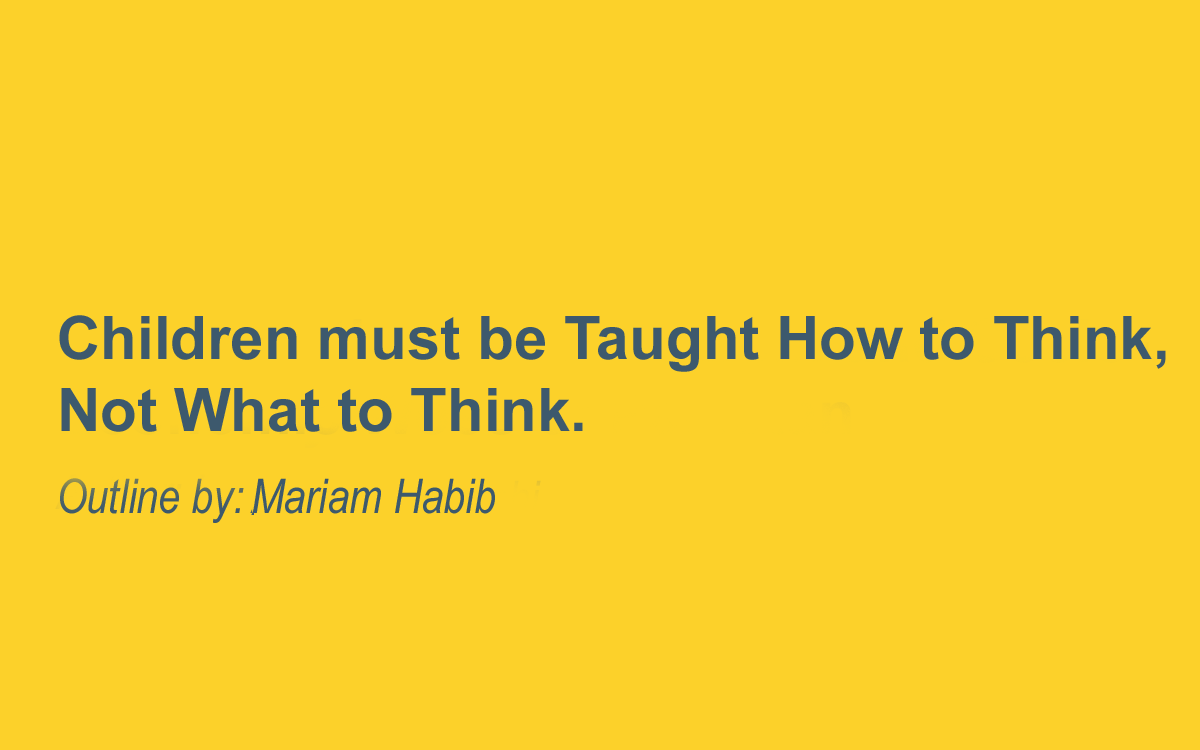Children must be Taught How to Think, Not What to Think.
Author: Mariam Habib
Outline
1. Introduction
Prioritizing the cultivation of critical thinking and problem solving skills is children’s education, as opposed to traditional vote learning, not only enhances their intellectual growth but also equips them with the adaptive capabilities necessary for navigating the complexities of a rapidly evolving world.
2. Limitations of Teaching Children what to Think
a. Lack of creativity and problem solving skills
b. Limited application in real-world scenarios
3. Why Children should be Taught how to Think
a. Economic and social progress worldwide
b. Increases living standards
c. Fosters creativity and problem-solving skills
d. Inculcates lifelong learning
e. Enhances the application of knowledge in real world scenarios
4. How can Children be Taught how to Think
a. Teacher training and professional development
b. Encourage inquiry-based learning
c. Revisiting the curriculum
d. Technology integration in education system
e. Integrate real-world applications in classroom learning
5. Analyzing the Impact of Critical Thinking in Societies : Case Studies :
Post- renaissance Europe and its Meteoric Rise
6. Conclusion



